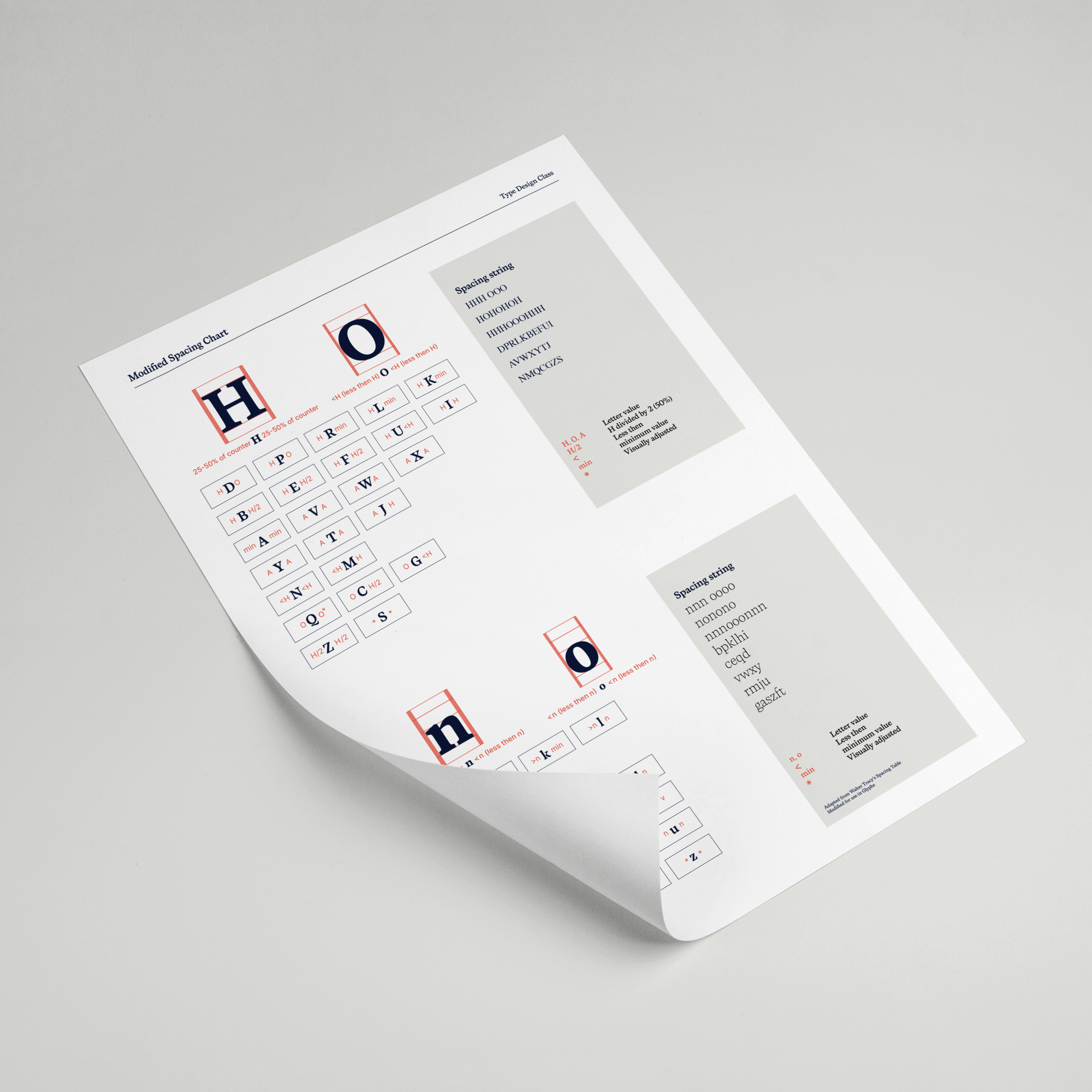A Revised Spacing Chart
In the book ‘Designing Type’ by Karen Cheng there are a few spreads about spacing and kerning your font, which is one of the trickier and more time-consuming steps in the font-making process. I tried using that technique a few times, but I never really felt like the diagram was working for me.
So I changed it to a structure that was more practical. Make use of it to your benefit.
The issue
Designing Type contains a diagram that was created by Walter Tracy in 1986 and can be found there on page 55. It uses a numbering system of 1–7, which corresponds to the written text in the legend, to display the value for the left and right side bearings of a serif style character. Going back and forth between the legend and the letters takes time, and mistakes are inevitable.
My solution
In Glyphs, you can enter a number (let's say 50) to assign a value to a side bearing. You can also type a character, such as the letter ‘H’, that you have previously spaced. You don’t have to remember what the numbers mean if you replace the numbers 1 through 7 with a clear letter-value before and after each character.
So, <H means ‘less-than H’, ‘<O’ means ‘less-than O’. The values ‘A’, ‘O’, and ‘H’ are the values of the already set characters.
To get even more technical: if you only work in a single weight font in Glyphs, you can also type an ‘=’ before a letter-number value. =H-20, or =H/2 (H divided by 2) but it’s not recommended to do that if you work with multiple masters.
Download this free revised spacing chart and improve the spacing of your font
Donate to
The Coffee Fund
The content on this blog and on Instagram is free to use, but it does take a lot of time to research everything and create the posts. Do you want to return the favor, but are you not sure how to do that? You can always buy me a coffee at Lucas Utrecht, a coffee & carrot cake, or 1kg of my favorite Coffee Beans, you decide, whatever you think my help was worth to you.









